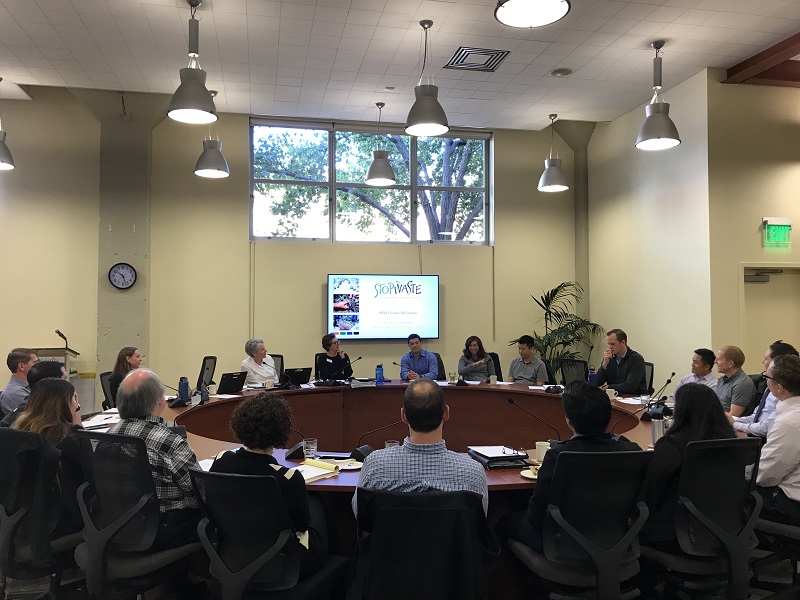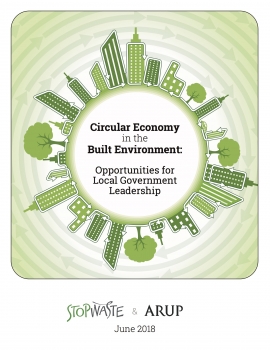Codes & Standards
C&D Debris Requirements
Statewide: CALGreen, California's mandatory green building code, requires most new construction projects to divert at least 50% of C&D debris.
Statewide: CALGreen, California's mandatory green building code, requires most new construction projects to divert at least 50% of C&D debris.
Construction and demolition (C&D) debris includes materials such as wood, drywall, metal, concrete, glass, insulation, soil and cardboard. C&D materials account for between 21.7 to 25.5% of the disposed waste stream in California (source: CalRecycle). With good planning, much of this material can be reduced, reused or recycled. Learn more:
StopWaste partners with local governments in Alameda County to advance innovative solutions that reduce waste in the built environment. We offer local governments:

Get help navigating the changing world of policies and regulations that address critical sustainability issues, including:
Green labels, codes and standards drive energy and water savings, reduce waste and greenhouse gas emissions, and lead to healthier, more resilient communities.
On July 1, 2024, a series of updates to California's green building code goes into effect. StopWaste has put together several resources for building department staff who will be responsible for enforcing these new codes. Additional details are available here.
In California, there are more than 3 million multifamily buildings, accounting for approximately 24% of residential energy use and about 11% of all building energy use in the state. Over 70% of these buildings were constructed prior to 1978, before there were efficiency standards.
Energy and water efficiency improvements in these buildings can provide significant cost savings for renters and property owners, and can help municipalities meet their greenhouse gas reduction goals.
In the United States, buildings account for approximately one third of raw material use, total energy use, greenhouse gas emissions, and waste generation, as well as 12% of potable water consumption.
As part of StopWaste's mission to increase recycling and reduce waste in Alameda County, we develop innovative solutions to address the environmental impacts of the building sector.
Our priorities include:
This fact sheet can help businesses and institutions find environmentally preferable cleaning products that can handle the same commercial, industrial, and residential cleaning needs as traditional cleansers.


Authored by StopWaste and Arup, this primer provides an overview of a circular economy framework for the built environment at the community, neighborhood and building scales. The ideas and concepts included here are intended to stimulate local government decision-makers and staff in Alameda County and beyond to consider policies and actions in their jurisdictions.
This document provides guidelines to help designers of multifamily, commercial and mixed-use buildings plan for recycling collection when designing new buildings or major renovations.
StopWaste partnered with Healthy Building Network and the San Francisco Department of the Environment to investigate ways to enhance the quality of post-consumer recycled-content raw materials (or “feedstock”) used in the manufacturing of building products. A series of reports summarize our findings and recommendations for optimizing recycled-content feedstocks in order to increase product value, marketability and safety. Audiences for the reports are product manufacturers, major purchasers of building products, government agencies, and the recycling industry.